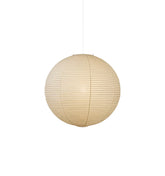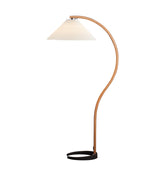The Complete Guide to Light Bulb Types, Bases, and Global Standards
Navigating the world of light bulbs can be confusing with so many types, bases, and regional variations. Whether you're replacing a bulb at home or purchasing lighting internationally, understanding these differences is crucial for compatibility, safety, and optimal performance. This comprehensive guide covers everything from bulb technologies to global standards.

Understanding Common Household Light Bulb Types
Currently, household light bulbs in the market are mainly divided into the following types, each with unique working principles, energy efficiency, and lifespan characteristics.
LED Bulbs
LED bulbs represent the current market mainstream and future direction. They are highly energy-efficient (requiring significantly lower wattage than incandescent or fluorescent bulbs to deliver the same luminous flux), generate minimal heat, and offer an exceptionally long lifespan (lasting several times longer than energy-saving bulbs and dozens of times longer than incandescent bulbs). LED technology encompasses various color temperatures and lighting possibilities, with rich color options ranging from warm yellow to cool white, meeting diverse lighting scenario requirements.
Incandescent Bulbs
As the first type of electric light in history, incandescent bulbs work by heating a filament until it glows. They produce soft, warm yellow light but have extremely low energy efficiency (only about 5% of electricity converts to light, with the rest becoming heat), making them very energy-inefficient. Due to energy waste concerns, many countries have banned the production and sale of most incandescent bulbs.
Fluorescent Lamps
Also known as daylight lamps, fluorescent bulbs have higher luminous efficiency than incandescent bulbs, making them relatively energy-saving. They're recognized for their efficiency, long service life, and low cost. However, it's important to note that fluorescent lamps typically have poorer color rendering than incandescent bulbs, and their light may appear cold, harsh, and bluish. Additionally, fluorescent lamps contain mercury and other heavy metals, requiring proper disposal and cannot be treated as regular trash.
Halogen Bulbs
Halogen bulbs are essentially an improved version of incandescent technology, using halogen gas to enhance luminous efficiency and lifespan. Their light more closely resembles natural daylight. However, since they still consume considerable electricity, they're gradually being replaced by more efficient LED alternatives.
Understanding Key Bulb Parameters
When selecting the right bulb, understanding key parameters on the packaging is crucial.
Luminous Flux (Brightness)
Luminous flux refers to the light source's brightness, measured in lumens. Higher values indicate brighter bulbs. When we ask "is the lamp bright enough," we're referring to luminous flux.
Color Temperature
Measured in Kelvin (K), color temperature determines light color:
-
2700K-3000K: Warm yellow light, suitable for creating a relaxing atmosphere
-
4000K: Pure white light
-
5000K+: Cool white light, closer to daylight, helps with concentration
Wattage (Power Consumption)
This is the unit of power consumption, representing the bulb's power rating. It's important to understand that wattage affects electricity consumption, not brightness directly. For the same brightness level, lower wattage means greater energy savings.
Color Rendering Index (CRI)
Also called color rendering index, CRI measures how accurately a light source reveals colors compared to natural light. Higher CRI values mean colors appear more realistic under that light source. Natural light has a CRI of 100. We recommend choosing bulbs with CRI above 80 (Ra > 80) for better color performance.
Regional Standards and Regulations
Different countries and regions may have varying standards and regulations for bulb usage. Understanding these is particularly helpful for overseas shopping or relocation.
Global Trend: Transition to LED
Driven by energy conservation and environmental protection, many countries worldwide (such as China, Brazil, Colombia, Mexico) have completely banned the sale of incandescent bulbs to encourage adoption of more cost-effective and longer-lasting LED technology. LED technology is rapidly becoming the globally dominant lighting technology. For example, countries like Uruguay have implemented regulations incorporating LED lights into national energy efficiency labeling systems, requiring relevant products to be certified and carry energy efficiency labels for market sales.
Varied Energy Efficiency Standards
Different countries may implement different energy efficiency labels and testing standards. For instance, in the United States, general lighting lamps have specific testing procedure requirements. In Egypt, there's mandatory implementation of the Egyptian Standard ES 7825 "Luminaires - General Requirements and Tests." China has national standards like GB/T 15039-2021, specifying technical requirements for luminous intensity and standard bulbs for total luminous flux. Therefore, when purchasing, especially from overseas, paying attention to whether products comply with local energy efficiency and safety standards is essential.
Global Light Bulb Base Standards
Light bulb bases vary by region, and using incompatible types can prevent bulbs from fitting your fixtures properly.
Common Base Types Worldwide
| Base Type | Primary Regions | Key Features | Typical Use |
|---|---|---|---|
| E26 | North America, Japan | 26mm screw base, 120V | Standard household lighting |
| E27 | Europe, Asia, Australia | 27mm screw base, 220-240V | Main household lighting |
| E14 | Europe, Asia | Small screw base, 220-240V | Decorative lamps, chandeliers |
| B22 | UK, Australia, Asia | Bayonet mount, 220-240V | Traditional household lighting |
| GU10 | Global | Twist-lock pins, mains voltage | Spotlights, downlights |
| GU5.3 | Global | Two-pin base, 12V low voltage | MR16 spotlights |

How to Choose Bulbs by Scenario
After understanding bulb types and parameters, you can combine them according to different spatial functions and atmosphere requirements.
Living Spaces
Living rooms and bedrooms typically require creating a warm, relaxing atmosphere. We recommend choosing LED lights or ceiling lights with color temperatures between 2700K-3000K, offering soft, warm light. Consider using dimmable bulbs or fixtures to adapt to different activities and moods.
Work and Reading Areas
Desks, kitchen countertops, and similar spaces need bright, clear light to ensure efficiency and comfort. Choose LED desk lamps or downlights with higher color temperatures (4000K-5000K) and higher lumen values. Simultaneously, ensure the lighting is flicker-free, and the Color Rendering Index (Ra) is preferably greater than 90 to reduce eye strain and accurately render colors.
Accent and Ambient Lighting
If you need to highlight wall art, collectibles, or create spatial depth, use LED spotlights or wall lights. Choose spotlights with appropriate beam angles to focus light. Wall lights provide relatively dim illumination and can serve decorative purposes in homes.
Critical Compatibility Notes
E26 vs E27: Important Differences
While E26 and E27 bases appear similar and may physically fit the same sockets, they have crucial differences:
-
E26: Designed for 120V systems (North America, Japan)
-
E27: Designed for 220-240V systems (Europe, Asia, Australia)
Safety Warning: Using an E26 bulb designed for 120V in a 230V E27 socket can create a fire hazard due to different electrical insulation requirements.
Global Trends and Regulations
Most countries are phasing out inefficient bulbs in favor of LED technology. Many nations including China, Brazil, and Mexico have completely banned incandescent bulbs. Always check local regulations when purchasing bulbs internationally.
Smart Bulb Selection Guide
By Room Type
-
Living Areas: Warm white (2700K-3000K) LED bulbs with high CRI for comfortable ambiance
-
Kitchens & Bathrooms: Cool white (3500K-4100K) for task lighting
-
Home Offices: Daylight bulbs (5000K+) with 90+ CRI for concentration and color accuracy
-
Bedrooms: Dimmable warm white LEDs for adjustable ambiance
For Specific Fixtures
-
Recessed Lighting: BR30 or GU10 LED bulbs
-
Track Lighting: MR16 or GU10 spotlights
-
Chandeliers: E14 or E12 candelabra bulbs
-
Table Lamps: Standard A19 or A15 bulbs
Energy Saving Tips
-
Choose ENERGY STAR certified LED bulbs for guaranteed efficiency
-
Look for lumens, not watts when comparing brightness
-
Consider smart bulbs for automated scheduling and additional savings
-
Use dimmers where appropriate to extend bulb life and save energy
- bulb base types
- CFL bulbs
- color temperature
- commercial lighting
- CRI rating
- E26 E27 bases
- energy efficient bulbs
- global electrical standards
- global lighting standards
- halogen bulbs
- home lighting
- incandescent bulbs
- international lighting standards
- LED bulbs
- light bulb bases
- light bulb guide
- light bulb types
- lighting compatibility
- lighting parameters
- lighting regulations
- lighting selection guide
- lumens vs watts
- regional voltage standards
- voltage compatibility


































